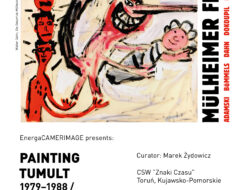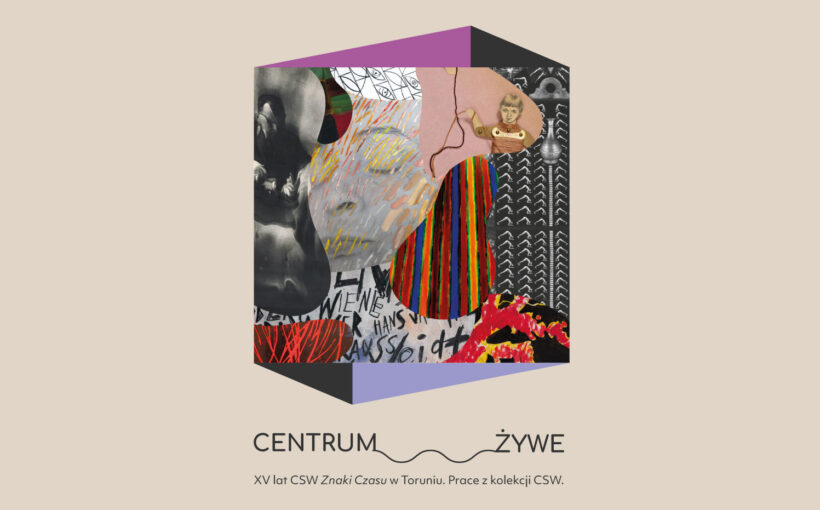When: 26.05.2023–27.08.2023
Exhibition opening: 26 May (Friday), 18:00
Curator: Krzysztof Stanisławski
Coordinators: Matylda Hinc, Renata Sargalska
Exhibition Production: Wojciech Ruminski
The CoCA Znaki Czasu in Toruń was established within the framework of the Ministry of Culture’s Znaki Czasu (Signs of the Times) national programme of 2004. It was a broad programme which envisaged the creation of more than a dozen model centres and regional collections. The first and so far only one of the centres planned under the programme was created in Toruń. It is the first centre built from scratch after World War II dedicated to contemporary art and at the same time one with the largest exhibition space in the country, exceeding 4,000 m2.
According to the assumptions of the programme’s initiator, Minister of Culture Waldemar Dąbrowski, the inspiration for the Polish Znaki Czasu were to be the French FRACs (Fonds régionaux d’art contemporain, i.e. Regional Funds for Contemporary Art). Since 1983, 33 such institutions have been established. The idea of transplanting the French experience to Poland was bold and innovative, as it seemed at first, but in the absence of consistency in its implementation, it became a mere isolated episode, associated with the programme primarily by name, which is now historical, as the initiative was officially closed down.
But the first and last building of the CoCA Signs of the Times does exist and has just celebrated its 15th anniversary. It is an independent public cultural institution, organised by the Ministry of Culture and National Heritage (as to 50% – until 2010 the Ministry was the only organiser), the Marshal’s Office, and the City of Toruń, which is the main organiser. The municipality owns the land and building of the CoCA, while the contemporary art collection, collected over 15 years, is the property of the CoCA.
On the occasion of our 15th anniversary, we have decided to proudly present the output of the more than 200 exhibitions we have organised to date and the collection itself. And that’s how the idea of an exhibition entitled The Living Centre was conceived.
Naturally, it would not have been possible to present, even in a piecemeal fashion, these 200 exhibitions and several hundred other events organised at the CoCA, and so the curator was faced with the difficult task of making the proper selection. At first, 15 were to be included, but it later transpired that this number had to be increased. It included exhibitions of high artistic quality, important in terms of content, but also those that were well received by the public and the media. We must not forget that we are working for an audience and whether a particular exhibition was attended by a record number of people and whether the event had extra-local appeal and was simply remembered was important as well.
Our Living Centre is therefore the exhibition of exhibitions – twenty important displays, presenting outstanding artists and important themes. They were prepared by various curators and the same team of CoCA employees.
The second fundamental premise of this complex project was the presentation of the collection, for which it was not always possible to obtain works by the artists presented in the exhibitions. Therefore, in several cases we had to resort to presenting documentation rather than specific works. This was the case with the section devoted to Marina Abramović, the heroine of the most famous exhibition at the CoCA to date, as well as Gustav Metzger or Peter Greeneway. Perhaps one day we will fill in the gaps, but for the time being we had to content ourselves with photographs and video.
The presentation of the collection according to the exhibition key and the programme objectives, which changed over the course of a decade and a half with the tenure of successive directors, allowed for a slight reordering of the collection. It contains hundreds of works that do not form a unified whole in terms of content. This is also one of the aims of exhibitions such as this one: an attempt to crystallise the main motifs, themes and, above all, the specificity of the Toruń collection against the background of dozens of others in the country.
 The Institution is funded from the budget of Toruń Municipality
The Institution is funded from the budget of Toruń Municipality



